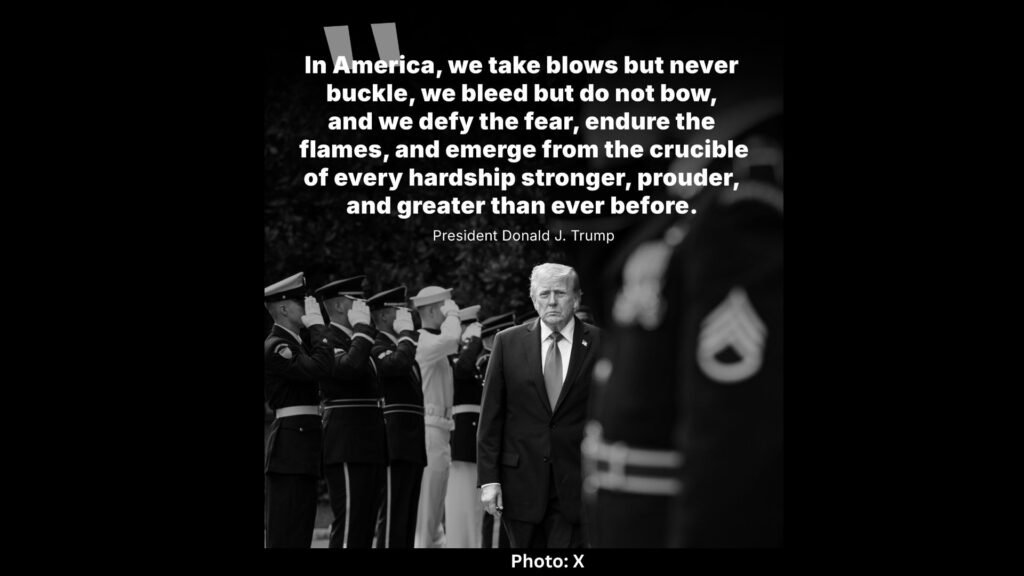Political violence isn’t a new story in America. It’s woven into the fabric of the republic. The Civil War itself was the most brutal political conflict the country ever faced, but even outside that battlefield, assassinations and attacks have scarred the nation’s memory. Abraham Lincoln, the president who held the Union together, was shot in a theater by a Confederate sympathiser. James Garfield was killed by a disgruntled office seeker. William McKinley fell to an anarchist’s bullet. And John F. Kennedy’s death in Dallas is seared into the minds of generations.
These moments remind us that the ballot box has never been the only weapon in American politics. Violence lurks when debate hardens into hatred and when opposing sides no longer see one another as legitimate.
The Violent Sixties and What They Revealed
If Lincoln’s assassination symbolised a country still struggling to recover from civil war, the 1960s showed just how volatile democracy can be under pressure. John F. Kennedy’s assassination in 1963 was followed by the murders of Martin Luther King Jr. and Robert Kennedy in 1968. Those killings weren’t isolated; they came during years of riots, civil rights struggles, anti-war protests, and deep national division.
Here’s the thing: those assassinations shook the country not just because of who died, but because they revealed something raw. Politics had become existential. Civil rights weren’t just policy questions; they were about who counted as fully American. Vietnam wasn’t just a war overseas; it was a test of the government’s honesty and morality at home. And when politics feels like life or death, violence is never far behind.
Militants, Militias, and the Turn of the Century
Fast-forward a few decades and the threats took a new form. The late 20th century saw radical groups and militias step into the spotlight. Timothy McVeigh’s bombing of the Oklahoma City federal building in 1995 killed 168 people, the deadliest act of domestic terrorism before 9/11. McVeigh wasn’t acting in a vacuum. He was radicalised by militia movements that believed the federal government was an enemy of freedom.
The 1990s also saw abortion providers targeted, with doctors shot and clinics bombed. Political violence wasn’t just aimed at presidents or national leaders anymore. It spread to local figures, activists, and even ordinary citizens caught in ideological crossfire.
Republicans and Democrats: No Side Spared
The narrative that only one side suffers from political violence doesn’t hold up under scrutiny. Yes, right-wing extremists have carried out many of the deadliest acts in recent decades. But Democrats and Republicans alike have been in the crosshairs.
Representative Gabrielle Giffords, a Democrat from Arizona, was shot in 2011 at a constituent event. House Republican Steve Scalise was nearly killed in 2017 when a left-leaning gunman opened fire at a congressional baseball practice. Judges, election officials, and even school board members have faced threats and attacks. The message is clear: when politics polarises, the violence doesn’t discriminate by party.
Why Polarisation Is Different This Time
America has always had divides, but the level of polarisation today feels sharper. People no longer simply disagree; they believe the other side threatens the country’s very survival. The language of politics has shifted from compromise to combat, from debate to delegitimisation.
Polling shows that majorities of Republicans and Democrats alike now view members of the opposite party not just as wrong, but as dangerous. That’s a powerful accelerant. When you convince yourself the other side isn’t just misguided but evil, violence starts to look like self-defense.
Conspiracy Theories That Went Mainstream
What’s new in the 21st century is the way conspiracy theories pour gasoline on the fire. From QAnon to election denial to fears of demographic replacement, fringe ideas have moved into mainstream political discourse.
Take the great replacement theory, which claims elites are importing immigrants to displace native populations. Once a fringe European idea, it’s now echoed by influential figures in the US. Or the belief that the 2020 election was stolen, an idea that helped fuel the January 6 attack on the Capitol.
When millions believe a conspiracy, it doesn’t stay on message boards. It spills into the streets.
How the Internet Radicalises in Silence
In the past, extremists had to find one another in person. Today, the internet does the work. Platforms like Facebook, X, and encrypted apps connect angry, isolated individuals with communities that validate their rage. Algorithms push people toward more extreme content.
The result is a pipeline: someone searches for immigration news, gets nudged toward content claiming migrants are invading, and before long, they’re reading manifestos justifying violence. Online echo chambers transform anger into certainty, and certainty into action.
Leaders, Language, and the Dangerous Feedback Loop
Political leaders know words have consequences. Yet the rhetoric has grown sharper. When leaders call opponents traitors or enemies of the people, it signals to their followers that the fight is existential.
Donald Trump isn’t the first American politician to use fiery language, but his style has been uniquely effective in framing politics as war. At the same time, left-wing activists too have adopted slogans that paint their struggle as survival itself.
This language creates a feedback loop: leaders speak harshly, followers act violently, and leaders then point to the unrest as proof that their warnings were right.
The Weight of Cultural Anxiety
Underneath all of this is cultural anxiety. America is changing racially, religiously, and economically. For some, those changes feel like progress. For others, they feel like loss. History shows that moments of rapid change often spark backlash.
Immigration, LGBTQ rights, racial justice movements, debates over gender and education—all of these are flashpoints where culture and politics collide. And when groups feel cornered, they lash out. Political violence is often less about policy than about identity: who belongs, who has power, who sets the rules.
Numbers That Show the Crisis in Motion
Data backs up what many feel in their bones. The FBI has reported sharp rises in threats against public officials. Surveys show one in five Americans now believe violence may be justified to protect their political vision. Election workers, teachers, and even healthcare officials during the pandemic have faced harassment and threats.
What this really means is that political violence isn’t an outlier anymore. It’s becoming part of the landscape.
So Where Does This Leave America?
The killing of Charlie Kirk is only the latest entry in a long, grim timeline. But it lands in a moment when the country is already raw and primed for division. If history tells us anything, it’s that violence doesn’t heal divides, it deepens them.
The challenge is whether America can find ways to step back from the brink. That requires leaders willing to lower the temperature, citizens willing to see opponents as neighbors rather than enemies, and institutions resilient enough to withstand the strain.
Because here’s the hard truth: when politics turns deadly, democracy itself is on the line.
Read More: False Starts and Frayed Nerves: The Untold Story of FBI’s ‘Historic’ Manhunt in Utah




